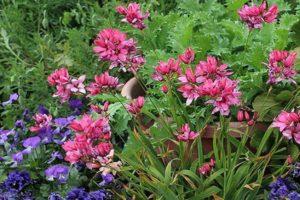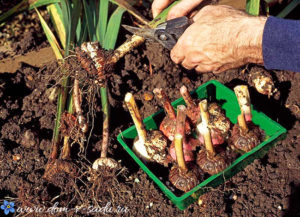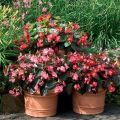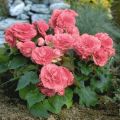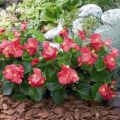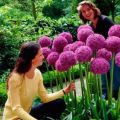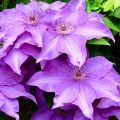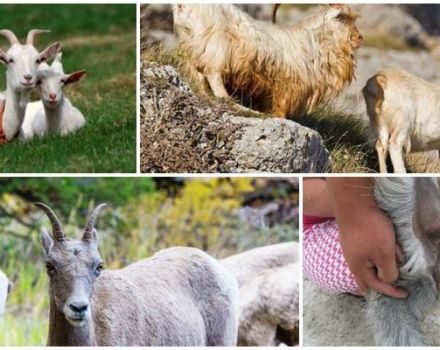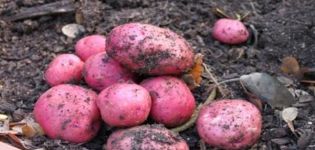25 types and varieties of begonias with descriptions and characteristics
Florists and gardeners all over the world have long included begonia in the list of the most beautiful plants. After all, the flower has more than 1000 varieties and varieties. Florists, gardeners and designers use decorative varieties of the begonia family to create flower beds, rock gardens and garden decorations. Begonia is bushy, in the form of lianas and dwarf shrubs crawling on the ground, ampelous.
Content
- 1 How to choose a begonia?
- 2 The most popular varieties of culture: characteristics and description of varieties
- 2.1 Eternal blooming
- 2.2 Liana
- 2.3 Decorative deciduous
- 2.4 Royal Rex
- 2.5 Royal Escargot
- 2.6 Metallic or Metallic
- 2.7 Bauer or brindle
- 2.8 Mason
- 2.9 Cleopatra
- 2.10 Imperial
- 2.11 Collar or cuff
- 2.12 Bush
- 2.13 Coral
- 2.14 Fuchsia
- 2.15 Tuberous
- 2.16 Blooming begonia
- 2.17 Hogweed
- 2.18 Yellow
- 2.19 Griffin
- 2.20 Room Bover
- 2.21 Terry Pink
- 2.22 Bindweed
- 2.23 Ampelnaya
- 2.24 Red-leaved
How to choose a begonia?
When choosing the types and varieties of begonias, it is necessary to decide where it will be grown. Tuberous varieties of plants are grown in personal plots and in gardens, but begonia with a fibrous and branched root system feels better in indoor, home and greenhouse conditions.
Not only beautiful begonia flowers have decorative properties. Different varieties and types of plants have multi-colored or multi-colored foliage, which also has high decorative characteristics.
The most popular varieties of culture: characteristics and description of varieties
To choose the right plant for planting, you need to imagine how this or that kind of begonia looks. Know its size, the color range of inflorescences and foliage, the rules for planting and further care for this particular type of flower.
Eternal blooming
With the help of many years of work of breeders, many hybrid flower varieties have been bred. Ever-flowering begonia differs from its congeners by a long flowering period, beautiful inflorescences and decorative foliage.

Small begonia is planted to decorate flower beds and borders in parks and squares of large metropolitan areas. And flower bushes are most often found on personal plots and in gardens.
This type of culture is unpretentious to climatic conditions, therefore it grows well in open ground. At home and with proper care, this plant variety blooms all year round.
Liana
The plant has historical roots in the tropical forests of South America, so it is not surprising that there are varieties of liana begonia.
The shoots of such a flower develop quickly and stretch upward, clinging and braiding any obstacles in their path. Liana begonia grows up to 3 meters, so the plant needs a lot of space and air. Inflorescences are large, of various shades.
Decorative deciduous
A variety of varieties are distinguished by leafy and decorative deciduous begonias.The plant has a well-developed root system, so it does not have aerial shoots, and the leaves of the flower grow directly from the roots.
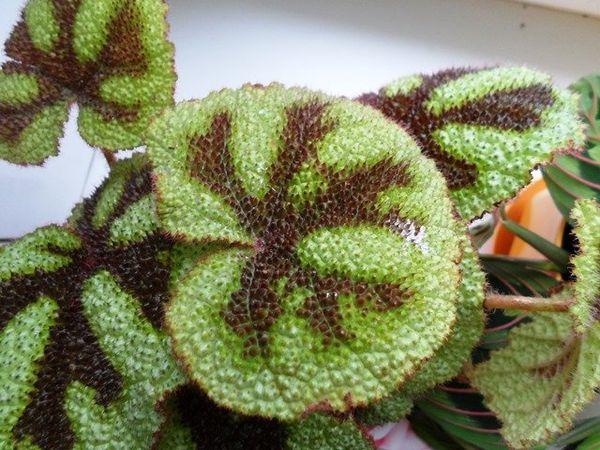
The main advantage of this species is its beautiful leaves, which differ in a variety of shapes, sizes and colors.
Royal Rex
Plant in the form of a bush with large colorful leaves. It is the foliage that gives this species special decorative properties.
The length of the leaf is up to 30 cm, the width is up to 20 cm, the main color is green, with a metallic or silvery shade. Along the edges of the burgundy or purple border, the jagged edging of the leaf is white, burgundy or red. Inflorescences are small, bloom with pink flowers.
The variety is propagated by cuttings or by dividing adult bushes.
Royal Escargot
A variety with decorative, multicolored leaves. The outer and central areas of the leaves are colored olive and brown. A wide strip of a silvery shade runs along the middle part of the leaf plate. From above, the leaves are covered with burgundy pile, and at the base they twist into unusual spirals. Plant height rarely exceeds 30cm.
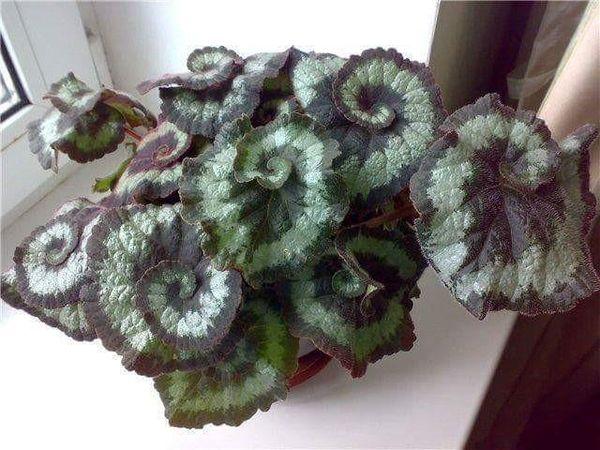
Metallic or Metallic
A bush with oval leaves of greenish and olive shades. On the edges on the leaf plates, there are framing in the form of denticles, and the leaves themselves are covered with pollen from above, which shimmers with metallic reflections in the light.
Bauer or brindle
Small bushes with evergreen leaves of unusual color. The leaf blade in the upper part of light green shades, along the edges of which brown, gray or black spots are clearly expressed in a chaotic manner. The lower part of the leaves is covered with fine, white pile. Inflorescences are friable, bloom with white and pink small flowers.
Mason
A highly decorative plant with a thick stem and multicolored leaves. The leaf plates are corrugated, elongated oval, bright green shades with dark spots that form bizarre patterns on them. Inflorescences are loose with small white and greenish flowers.
Cleopatra
Cleopatra begonia bushes grow up to 50cm. The leaves of the plant are large, similar in shape to maple leaves. The outer part of the foliage is plate in different shades of green and olive, the inner part is burgundy and red. Cuttings are high, covered with small white villi.
Inflorescences are small, bloom with pink flowers. The active flowering phase of this begonia variety occurs in the winter months. With proper care, the plant blooms several times a year.
Imperial
The homeland of the variety is Mexico. Small bushes up to 25cm with unusual leaves, have high decorative properties.
Leaf plate up to 10 cm, with small pimples, bright green and olive shades with silvery intersperses. It enters the active flowering phase several times a year. Flowering time is in January and lasts until early spring. Begonia blooms again in late August.
During the flowering period, the plant produces a peduncle, on which there is a cluster-like inflorescence with white and green shades of small flowers.
Collar or cuff
Collar begonia bushes grow up to 50cm. The large leaves of the plant are endowed with decorative properties. The upper part of the leaf plate is green, with small villi along the edges. The inner part of the leaves has hairy growths, unusual for the species, from which this variety got its name. Also, fleecy growths are present on the bases of the cuttings.
The period of the active flowering phase occurs in the middle of winter, and lasts until March. At this time, the plant produces a peduncle with a bun-shaped loose inflorescence, which blooms with bright pink flowers.
The variety loves lighted areas and abundant watering in the summer.
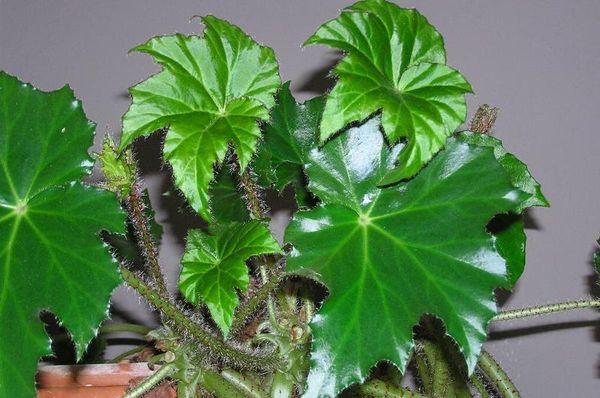
Bush
A variety of varieties of bush begonias, allows you to use its decorative properties, both in the open field of personal plots, and for indoor cultivation. Bushes are miniature, only 10-15 cm, and there are also tall varieties up to 1.5-2 m. Plants are distinguished by a variety of foliage and a wide range of colors during flowering.
Coral
Tall bush from 50 to 100 cm with straight stems and oval leaf plates. The outer side of the leaves has a rich green color with multiple silver blotches. The inner side of the plate is red or brown. The inflorescences are large and dense. During the active flowering period, small coral flowers open up.
Fuchsia
Bush up to 1m high. with branched branches. Green leaf blades are oval, medium in size and glossy. The inflorescences hang in bunches, and bloom in small flowers of red and pink shades.
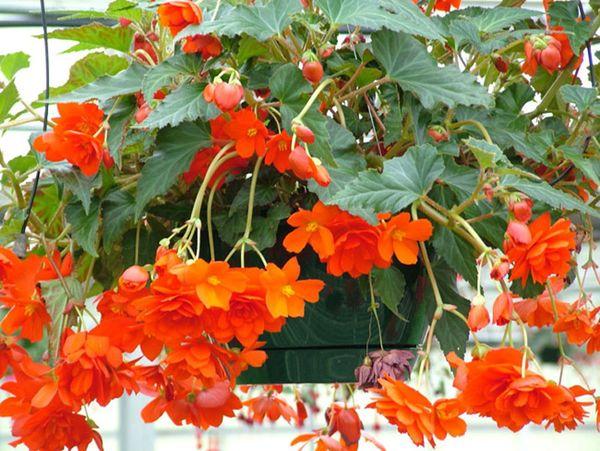
Tuberous
Tuberous begonia varieties are distinguished by a long flowering period and large inflorescences of various shades and colors. Sheet plates are glossy, matte, corrugated and nap, green and olive colors. The active phase of various varieties of tuberous begonias begins in spring and continues until late autumn.
Blooming begonia
Plants belonging to this species are unpretentious to climatic conditions. Therefore, temperature drops or hot days will not affect the development and abundant flowering of begonia. Many varieties of this species are capable of blooming several times a year, both in summer and winter months.
Hogweed
This variety of begonia has a creeping stem, up to 50cm. The leaves are large, similar to maple, with a thumb-shaped dissection. The leaf plate is green with olive or brown shades, the middle of the leaf plate is cut through with silver stripes.
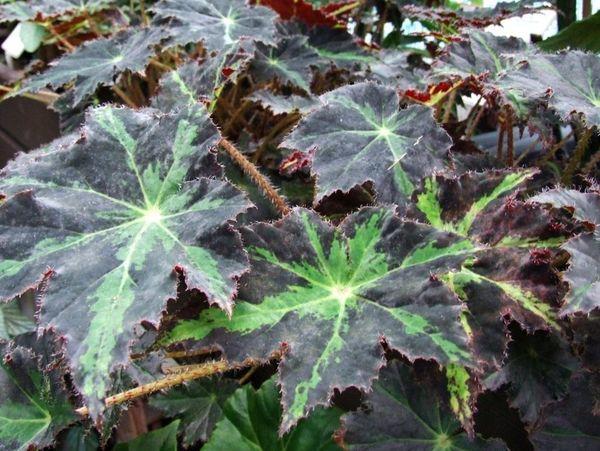
During the vegetative period, a long arrow of the peduncle grows, on which an ungulate inflorescence appears with small pinkish and white flowers.
Yellow
The yellow begonia variety is often used by breeders to create new plant species. Bushes of yellow begonia grow up to 0.5 m. Branches are flexible, with large leaf plates up to 20 cm along the edges with small teeth. When the flowering phase begins, inflorescences with yellow flowers appear.
Griffin
A hybrid variety based on royal begonia. The plant is suitable for cultivation at home and in winter gardens. In the summertime, it is taken out to gardens, where it is used to decorate flower beds, alpine landscapes and gazebos.
Tall stems with large leaves of rich green shades with black tint and silvery blotches. The underside of the leaf plate is red or burgundy.

During the flowering period, it is covered with small pink flowers.
Room Bover
Begonia of this variety is bred at home. A miniature plant with large leaves of dark green shades, similar to maple, with deep cuts. Inflorescences in the form of small panicles, bloom with white and pink small flowers. Long bloom, comes in spring.
Terry Pink
Small begonia, bushes grow up to 20cm, with green foliage and large, double flowers. Active flowering begins in mid-summer and ends in late autumn.
Bindweed
In its natural environment, the variety grows in the tropical forests of Brazil. A plant with flexible twigs up to 2 meters. The foliage is sparse, rich green shades. The dimensions of the leaf plate are average, from 9 to 12 cm. Inflorescences are uviform, bloom with small, white flowers. The flowering period begins in winter and ends in mid-spring.

Ampelnaya
The ampelous flower variety has long, flexible stems that point downward.When the plant enters the flowering phase, they are covered with inflorescences with large flowers of various shades. Ampelous begonias with double flowers bloom especially beautifully. This type of plant is used for hanging flowerpots and pots, garden plots and gazebos.
Red-leaved
The plant got its name from its foliage color. The upper part of the leaves are rich green shades with a waxy sheen. But the inside of the leaf plate is red. The leaves are wide, round. Small inflorescences bloom with delicate, pink flowers.
Small bushes look great in hanging flowerpots and pots.
